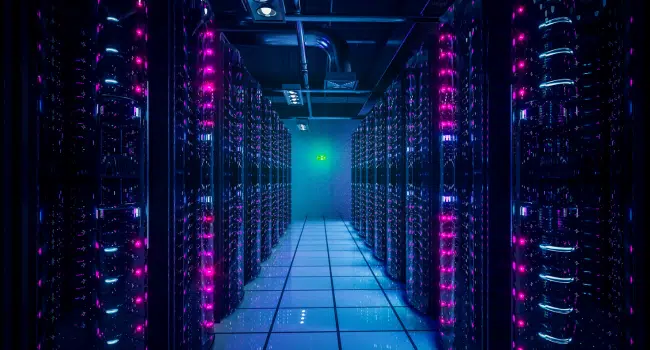Data center providers have been striving to achieve zero downtime. The consequences of data center failures or outages can be significant for a business, including damage to reputation, lost revenue, added costs, and loss of employee productivity. According to the Uptime Institute’s 2022 Data Center Resiliency Survey, 80% of data center managers and operators witnessed some form of outage over the past three years. Uptime refers to the assured annual availability of the IT infrastructure, expressed in degrees of 99%, where a small difference between percentages can translate to significant differences in downtime. Achieving 100% uptime is the top objective for IT leaders due to the growing significance of maintaining a reliable digital infrastructure in order to prevent costly downtime and provide constant access to data.
To ensure zero downtime, it is essential for businesses to ask the right questions when evaluating data centers. Implementing best practices and straightforward procedures can have a significant impact on business continuity. One way to reduce downtime is by automating administrative tasks and incorporating predictive analytics with AI. By doing so, administrators can receive valuable insights that can help them predict potential downtime.
According to Gartner, half of all cloud data centers will use advanced robots with AI and machine learning capabilities by 2025, leading to 30% higher operating efficiency. Predictive analytics has made significant progress in recent years, thanks to the growing adoption of AI in data center operations. This technology provides real-time data analytics and actionable intelligence, enabling the data center operations team to identify and predict potential failure points and immediately respond to them. Predictive maintenance can also warn operators if a system or component is likely to fail, and real-time thermal monitoring through predictive analytics can prevent overheating of equipment, which can lead to data center failure and downtime.
To ensure business resilience, data center operators need to make their facilities resilient to unforeseen incidents by having a disaster recovery plan in place that outlines the necessary steps to be taken during a power outage. This plan should be regularly tested to ensure functionality, including powering down systems, checking generators, verifying redundant systems, and monitoring temperatures. If any failure points are identified, prompt action should be taken to address them. Maintaining a comprehensive backup infrastructure is also critical to prevent data loss and ensure continuity of operations during outages.
Data center connectivity is crucial for ensuring zero downtime, and a redundant network and connectivity infrastructure are integral to guarantee reliable global connectivity. Best practices such as load balancing and failover mechanisms can help prevent downtime by redirecting traffic during an outage. Implementing multiple network solutions provides backup in case of a network failure. Carrier-neutral data center connectivity enhances security by protecting against DDoS and other cybersecurity threats.
Fire is a major concern in data center facilities, and a highly effective fire detection, prevention, and mitigation system is essential. While all commercial buildings must have fire safety mechanisms in place, data centers should go above and beyond the bare minimum to achieve zero downtime. Enterprises should look for data centers equipped with state-of-the-art fire detection and response systems, such as the Very Early Smoke Detection Apparatus (VESDA), which proactively thwarts fire and ensures resilient operations. Similarly, the Novec 1230 fluid-based fire suppression system can detect and prevent fire before it starts, automatically initiating a response within seconds.
Data center operators must ensure that their facilities are resilient to unforeseen incidents to make their customers’ businesses resilient. A disaster recovery plan must be put in place detailing the steps to be taken in case of a power outage, and it should be regularly tested to ensure its functionality. This includes powering down systems, checking the redundancy of systems, ensuring generators are operational, and monitoring temperatures. If any failure points are detected, necessary actions must be taken to fix them. Data centers must maintain a comprehensive backup infrastructure to ensure continuity of operations and guard against data loss during outages.
Data center connectivity is vital to ensure zero downtime, and a redundant network and connectivity infrastructure are integral to provide reliable global connectivity. Load balancing and failover mechanisms can also help prevent downtime by redirecting traffic in case of an outage. Implementing multiple network solutions provides backup in case of a network failure, and carrier-neutral data center connectivity can improve security against cybersecurity threats like DDoS.
Data centers must have highly effective fire detection, prevention, and mitigation systems to prevent and respond to fire incidents. The Uptime Institute has created globally recognized Tier Standards for data center uptime and overall performance, ranging from Tier I (basic capacity level) to Tier IV (fault-tolerant). The objective of data centers in Mumbai and other commercial cities should be near-zero uptime or uptime of at least 99.995% annually to ensure minimal to no impact on business. The cost of downtime is increasing, making it critical for data centers to prioritise high levels of uptime.
Read More on KulFiy:
What is Cloud Server? Benefits of Cloud Servers for Developers.
Dedicated Server Hosting: Is it the best infrastructure for your website?
